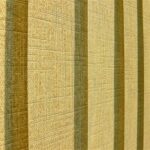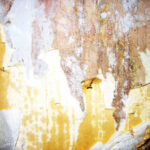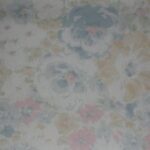It’s not unusual for people to use stencils on their walls. After all, they are even sold in home improvement stores, usually near the wallpaper and paint sections. But have you ever considered using them on the floors? There are many large stencils available, and you can use them in spaces other than on your walls. By following these simple steps, you can have some very interesting hardwood floors that all your friends will envy.
First, you’ll want to make sure your floors are appropriate for this type of project. Hardwood floors are going to be the only type that really work for this project. And beyond that, you’ll need to make sure they are properly prepped. The floors must be sanded, as if you are about to refinish them. This is not a minor task, and you may want to consider hiring a professional. After the floor has been deemed appropriate and prepped properly, you are ready to begin.
Choose your stencil, and find the center of the room. You will probably want a large style stencil that is approximately 2′ square. These are sometimes sold in home improvement stores, or you can search online for something that suits you. And remember, once you’ve chosen a good stencil, it doesn’t mean that you must continue the pattern all the way to the edge. If you decide to end it, block off a section around the edge of the room, and tape around it. You can even create a medallion in the center of the floor by only doing a small circular, rectangular, or square pattern.
Get a can of spray adhesive and follow the directions on the can. Apply it to the stencil, so that your stencil has some tackiness, and then stick the stencil to the floor. That way, you are less likely to have areas where the paint seeped underneath and ruined the look. If you want a more rustic look, you can simply tape the stencil around the edge, and let it seep under slightly.
Apply the stain with a foam brush, dabbing it first on a paper towel, and then on the open part in the stencil. By first dabbing off the excess, it makes for a cleaner look on the floor. The foam brush will give the best results, because it won’t create brush marks, and allows for a more even coating of the stain. Move the stencil carefully, fanning out from your original center mark in either a clockwise or counter-clockwise pattern to keep it even.
Finally, once you have finished your design, you still need to refinish the rest of the floor. It’s absolutely essential that you let your design dry first, because it will keep you from smearing it. Using a paint brush, carefully outline your design. This will take an enormous amount of time, especially if you have chosen a highly detailed design. Once it’s been outlined, you can take a slightly larger paintbrush and fill in the bigger spaces. Be careful to end your strokes on a groove in the wood floor, and you will have a much more finished, even look. Also, applying it with a foam brush is helpful here as well.
After you finish, you will need to apply a protective coat. Be careful not to use any polyurethane that is too glossy, because it will make the floor slick. Try to find a clear coat that is specially designed for floors, and you should be safe.
This is a time consuming task, and almost certainly not one you can wrap up in the span of a day, or even a weekend. Instead, expect to devote several weeks to it. But once you’ve finished, you will have a floor like those found in some of the priciest homes around the world. And all it cost you was the price of a stencil, a can of stain, several cans of polyurethane, and time.



